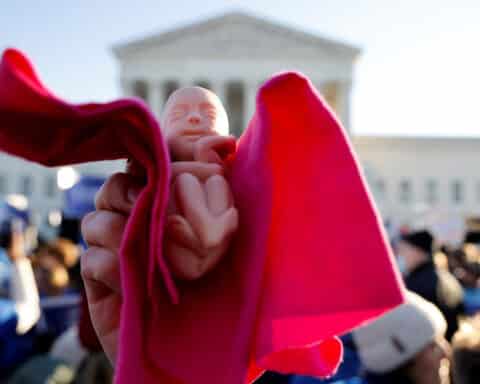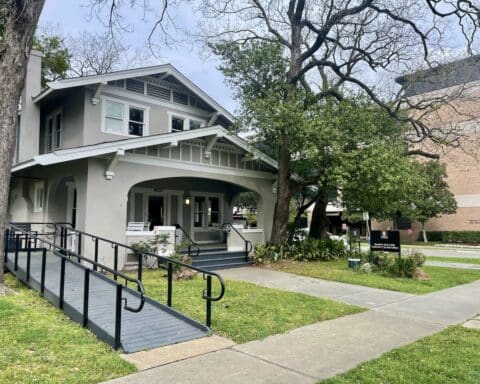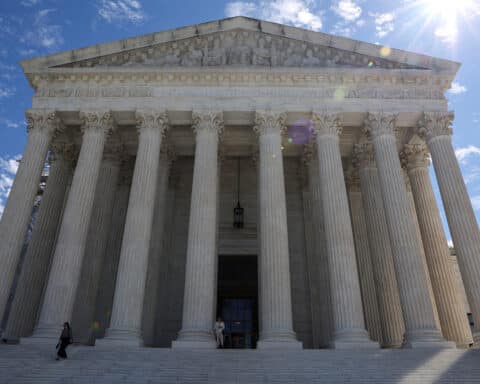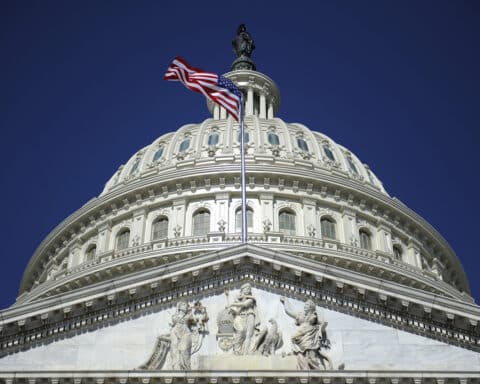As I think about the Senate hearings on Brett Kavanaugh’s nomination to the Supreme Court, the entire affair looks like a monstrous, distorting mirror where Americans see reflected certain large realities that darken our national life. Start with politics, surely the most obvious of these.
The political arena has always been a rough-and-tumble place where the spontaneous response to whiners was, “If you can’t stand the heat, stay out of the kitchen.” But the Kavanaugh hearings marked something different and ominous. Here was hateful evidence that American politics has become a take-no-prisoners blood sport. Central to how that happened is the culture war, especially the epic struggle over abortion.
Abortion was at the heart of the Kavanaugh fight, with pro- and anti-abortion groups pulling out all stops. Consider the efforts by NARAL (National Abortion Rights Action League). Strenuously opposed to Kavanaugh from the start, NARAL, which claims 2 million members, mounted a major campaign that included a “town hall” teleconference featuring two senators, Kirsten Gillibrand (D-NY) and Jeff Merkley (D-OR), and participation by 11,000 of its people. And NARAL was hardly alone.
Unavoidably, all this placed further strains on another central theme: the tenuous state of men-women relations. Obviously the downfall of predators like Harvey Weinstein and Bill Cosby is something to be applauded, as the #MeToo movement continues to win important victories in the fight to stigmatize and punish men guilty of abusing women. But progress has a price. As men testify (usually to one another), the drive against male abuse and exploitation has fallout that casts a pall over even objectively innocent social interactions.
Things have reached a point where some men say they fear merely to compliment female colleagues on dressing well lest they be accused of harassment. While this can involve relatively trivial matters, what’s ultimately at risk — a respectful, friendly relationship between the sexes — isn’t trivial at all.
And this, lastly, sheds some light on the troubled moral climate in which American kids have been coming of age for several decades.
Thirty years before Justice Kavanaugh and Dr. Blasey Ford were teens, I attended a Washington high school patronized by middle-class families where the climate was buttoned down, modest and even somewhat repressed. By contrast, contemporaries of Kavanaugh and Ford assure me that the image of teen socializing 1980s-style in the Washington suburbs as described in the hearings was all too accurate in its depiction of heavy drinking and casual sex. “Everybody smoked pot then,” a woman who now is a grandmother assures me.
What happened in the 30 years between my school days and theirs to account for the change? The answer is clear: a cultural revolution about sex.
Have things gotten better since then? I know of no reason to think they have. This year public high schools in Montgomery County, Maryland, where Kavanaugh and Ford attended private schools in the ’80s, began handing out contraceptives to students (to combat, it was said, an epidemic of sexually transmitted diseases). Meanwhile, social media routinely exposes vulnerable adolescents to new forms of seduction and socially induced anxiety reflected in a high rate of teen suicide.
And here, as the reflecting mirror of the Kavanaugh hearings disturbingly reminded us, is the environment in which many American kids have had to grow up for decades.





